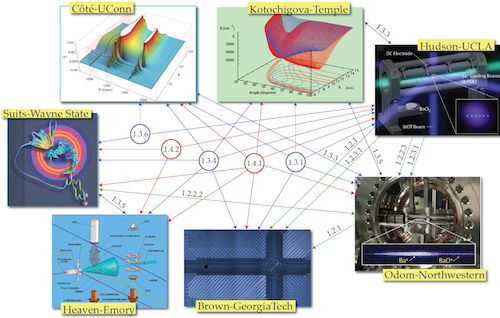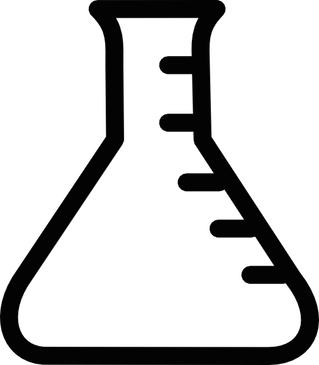A grand challenge of modern science is to understand and control chemical reactions with single quantum state precision . This full quantum control of chemical reactions will lead to a revolution in physics and chemistry with impacts reaching from material science to drug design.
To fully realize this goal, however, requires knowledge and control of the quantum states of both the reactants and the products of the chemical reaction – i.e. so-called state-to-state chemistry. Under this MURI award, we propose to use the unique features of the ion trap environment, e.g. long trap lifetimes, large trap depths, and integrability with various detectors, to enable a new generation in precision chemical sensing and quantum control of chemical reactions. With these techniques, full chemical reaction characterization and control will be possible, providing fundamental insight into chemical reaction dynamics in a fully quantum regime, leading to a myriad of technological benefits, such as compact chemical sensors.
Recent advances in the production and trapping of ultracold molecular ions have opened the door to a new regime for precision chemical sensing and quantum control of reactions that is particularly complementary to the crossed molecular beam apparatus. Though these techniques were developed for a variety of applications ranging from quantum information processing to precision measurement, they provide a near ideal platform for a revolution in chemical reaction characterization and control at the quantum level. The details and advantages of these techniques will be expounded in this proposal, but briefly they include: precision chemical measurement of the products and reactants; full quantum control over the internal and motional quantum states of the reactants; the study of reactions with charged reactants; trapping of reaction products; the study of slow reactions; and the study of reactions with rare reactants.

To enable this revolution, our MURI team is undertaking a coordinated effort on multiple research fronts that has been designed to advance the frontier of this rapidly evolving field. Our team has been structured to foster a strong collaboration between experiment and theory, as well as between chemists and physicists – in fact, our team has been built around many pre-existing collaborations. By combining our diverse expertise we expect to make rapid and significant progress. We also
expect this approach will work to maximize the impact of our results, as they will be disseminated to a broader community. Though the proposed work is novel and aggressive, we emphasize that it builds on techniques first proposed and developed by team members. Our team contains the only groups in the US who have already demonstrated sympathetic cooling of molecular ions with a MOT, rotational cooling of trapped molecular ions, and resolved sideband characterization of molecular ions. In addition our group has recognized leaders in molecular ion spectroscopy of metal-containing diatomics and reaction studies involving roaming reactions. The team also includes the leading theorists in the study of ultracold molecular ion reactions and molecular ion spectroscopy.
Our team has identified the key challenges facing the field and developed a research plan to drive progress on each of these fronts. The research areas our team will focus on can be distilled into the following three categories:
Our research efforts
 New Tools
New Tools
Platforms and precision detectors for ultracold ion chemistry: The development of new detection tools will lead to a variety of new techniques for detecting molecular ions with single ion, isotopic sensitivity. This work, in concert with our work on extending the species available in the ultracold, could lead to a new generation of improved detectors for biological, chemical, and explosive agents.
 New Reactions
New Reactions
Quantum-engineered ultracold molecular ion reactions: The work on ultracold molecular ion reactions will result in an improved understanding of the basic chemical processes at play and how to control them. As such, this effort could lay the groundwork for reaction control in mesoscopic samples, ushering in a new era in material science and drug design.
 New Species
New Species
Production of a wider range of ultracold molecular ions species: By extending the species available in the ultracold regime, we will bring the benefits of our work to a wider class of molecules, enabling progress in efforts from drug design to material science.
